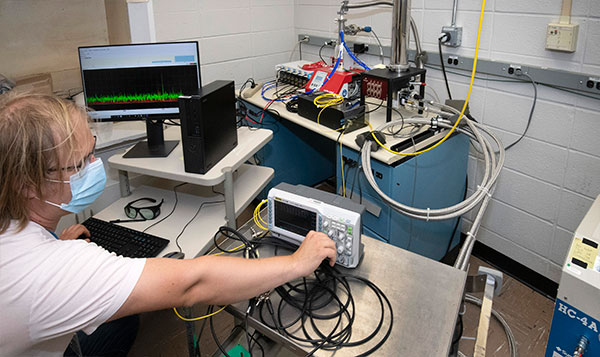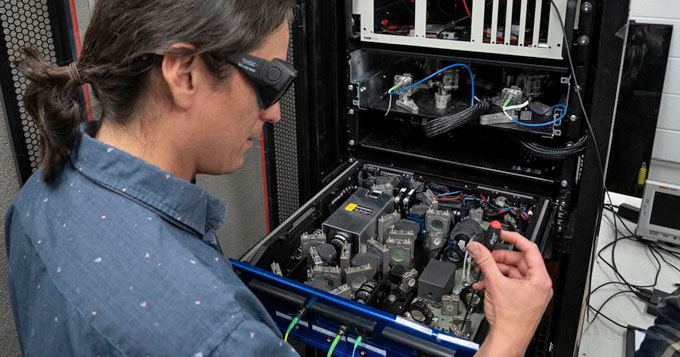System Development
Quantum Systems
The Instrumentation Department works at the forefront of quantum information science and technology (QIST), using quantum physics to develop all-new and potentially revolutionary technologies. Our primary focus is quantum networking, a national priority and the basis for a secure quantum internet of the future. We are also pursuing ways of improving existing detection systems, from astronomy to LIDAR, by applying quantum technologies. We work in close collaboration with the QIST group at Stony Brook University.
Our Capabilities
- Arrangement of large optical assemblies via three full-sized enclosed optical tables with climate control
- Generation of quantum entanglement with a portable polarization-entangled photon pair source
- Deployment of quantum communication hardware, including rack-mounted telecom laser sources and second harmonic generation systems; cavity-based telecom entanglement sources using high-finesse bow-tie cavities; and rack-mounted single-photon-detection systems for telecom wavelengths
- Detection of single photons by a multichannel infrared-sensitive superconducting nanowire single-photon detector (SNSPD) from Single Quantum EoS
- Refrigeration at millikelvin temperatures through a low-vibration dilution refrigerator setup equipped with microwave capabilities and free-space and fiber-coupled optical access
- Control and readout of qubits with cryogenic integrated electronics
- Development of cryogenic technology for superconducting interconnects
Case Studies
Quantum Repeater
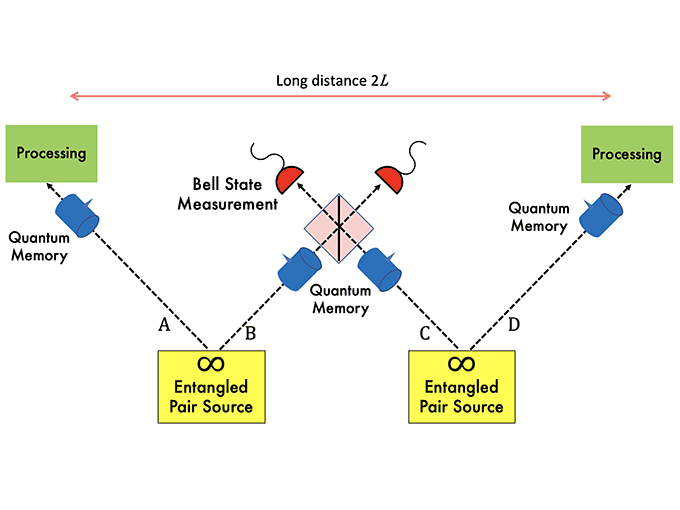
Layout of a basic quantum repeater, a key component to enable long-distance quantum networking. The repeater operation is greatly enhanced by the inclusion of quantum memories.
The ultimate goal of quantum networking is to distribute quantum mechanically entangled photon pairs across long distances, up to thousands of kilometers and much farther than single photons can travel in fiber or open air. The enabling technology for long-distance entanglement distribution will be the quantum repeater, which uses two entangled pairs over shorter distances to create a new entangled pair over longer distances. We are actively engaged in building the first photon-pair quantum repeater, which will be deployed as part of the first quantum wide area network across Long Island. Diagram: Quantum entanglement distribution experiments using fiber connections across Long Island.
Quantum Transduction
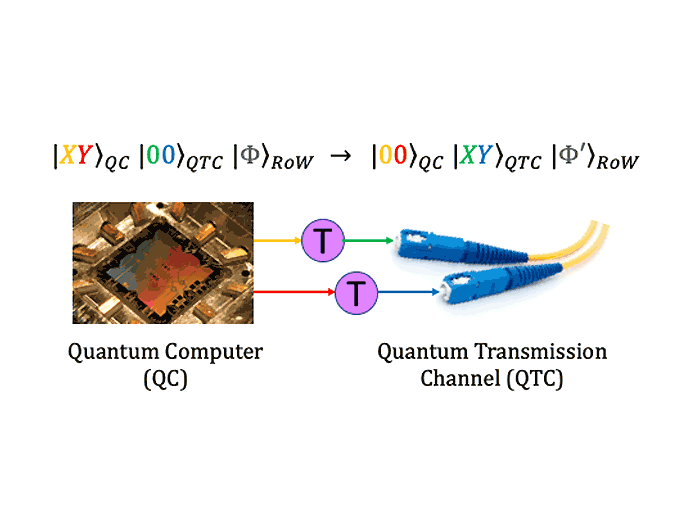
A superconducting-to-optical quantum transduction. The “T” operations must transfer and convert an entangled quantum state without disturbing it.
The “magic” of quantum computers is that their entire array of logic components can exist in multiple states at the same time. Maintaining such quantum superposition is very demanding, typically requiring millikelvin cryogenic environments for superconducting elements. An even harder unsolved challenge is picking up and moving the delicate quantum state at a quantum computer’s output across a long distance without disturbing it. We are working on a demonstration project to cleanly transfer the quantum state of a superconducting resonator element to the quantum state of a photon that can propagate over fiber at room temperature. This kind of capability is crucial to linking quantum computers together.
Quantum Control Interconnects
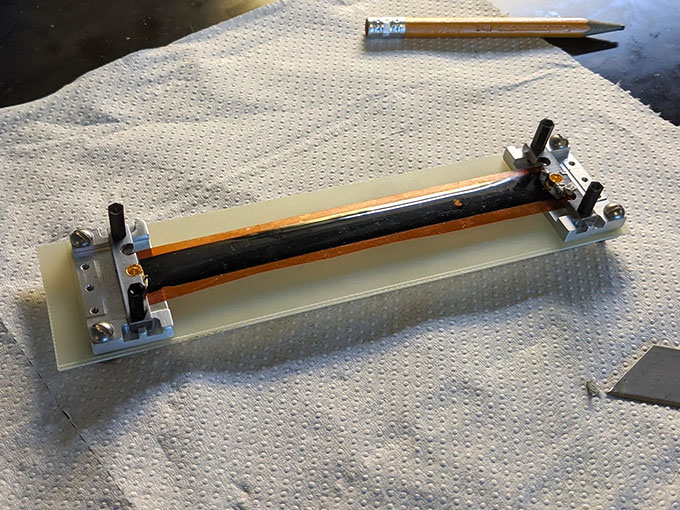
A microwave interconnect prototype ready for a liquid nitrogen test.
Superconducting quantum computers require thousands of microwave-frequency control lines that connect the cold (T ≈ 10 mK) processor to control electronics at higher temperatures (4K to 300K). A practical interconnect solution provides low microwave losses and low thermal conductance in a small physical footprint combined with moderate cost and manufacturing complexity. We are exploiting high-temperature superconductors and manufacturing techniques originally developed for accelerator applications to develop such solutions.
Quantum Free-Space Link
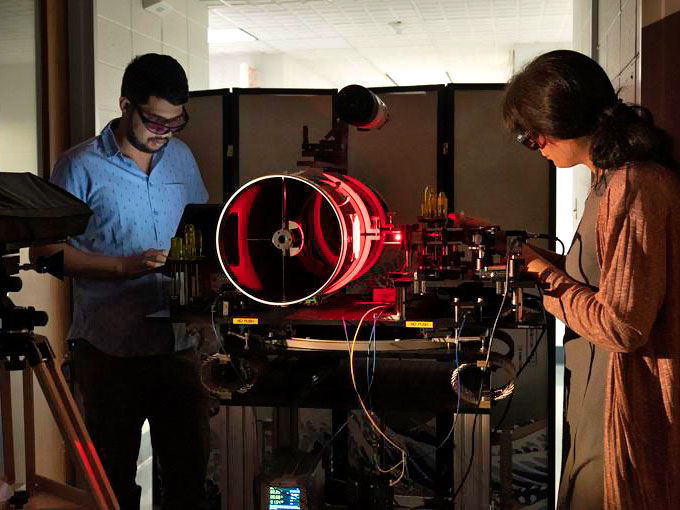
A free-space link prototype, which will project and collect single photons across kilometer distances.
We are designing an optical system to transmit entangled photons in free space for quantum communication over regional distance scales. This free-space link will deploy telescopes that dynamically steer and correct atmosphere-induced wavefront aberrations in real time, allowing for reliable over-the-air transport of single photons between Brookhaven and Stony Brook University. This system will also enable interferometric measurements of astronomical sources with unprecedented resolution. See details of the Quantum Astrometry project.




